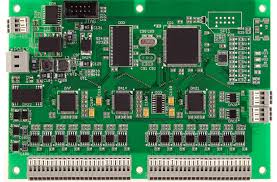Concealing The Misconception — The Truth About PCB Milling
One of them, for example is PCB Milling, or otherwise known as isolation milling, which is a way to engrave into a substrate, where the simplest and most common example are solid PCBs, the backbone of almost all the electronic devices we use today. Commonly used in the design and manufacture of complex electronic components, etching is the process in which copper areas are removed from a sheet of PCB material to reproduce a circuit layout.
How the Accuracy Works
Unlike most etching processes when the chemical is delivered over the top of the metal, like in the case of chemical etching, it is a reverse or subtractive process where the material is removed from the substrate to produce no waste and makes the process as an ideal PCB fabrication process. The method employs a sturdy and precise milling tool that industriously mills out copper paths from the base material. This precision is evident in its ability to mill to a width as small as 100 microns—the dimension of a human hair—and allows for the fabrication of extremely complex and minute circuit designs.
Two Bendable Benefits: Sustainable and Affordable
The most convincing benefit of PCB milling is its environmentally friendly nature. The original etching process involves using several types of chemicals that can be hazardous if not discarded appropriately. Milling, on the other hand, since it is a purely mechanical process, does not involve chemical treatments, and hence it produces little, non-hazardous waste.
Concurrently, PCB milling from the aspect of cost, generally does not require the same high setup costs as etching, especially when used in small batch production and prototyping. This makes it ideal for developing new products for small tech companies and startups at a cost that — while substantial — is still reasonable.

More Design Freedom and Faster Prototyping
This is essential for design and engineering teams who need to iterate on designs fast. PCB milling provides the ultimate level of freedom for prototyping. Design modifications can happen on the fly and within hours produce new prototype. This kind of agility can cut development time significantly and reduce time to market for many new products.
PCB milling, as its name says, is the process of removing areas of a PCB board to make it work the way you want, mainly for prototyping, instead of using a pre-manufactured PCB.external-link JavaScript not enabled.
The electronics industry is constantly evolving and developing with a growing demand for small and complex gadgets. PCB milling helps to manufacture dense and complex multi-layered boards, which are essential for the latest generation of electronic products like smartphones, tablets, and medical technologies. This is why PCB milling is not only better but also necessary for modern day circuit board fabrication, as PCB milling is the only method capable of producing these intricate structures in a fast and efficient way.
Challenges and Future Directions
We have many video chat teaching resources to help make this process easier, but so that the author understands why he/she is doing this, evidence can be found in the jumanji book as well. Mill process demanding a lot of precision need high end machines which are feed by competent operators. With technological advancements, the smaller feature sizes being made further support stringent requirements for the milling process.
In the future, this could mean adding advanced automation and AI to the milling process to make it yet more precise and less subject to human error. Forecasting, this technology is likely only to become even more efficient and capable in the future as electronic devices grow ever more complex.
Conclusion
PCB milling even thought it is a method, a very important one in the lifecycle of production process of a electronic device. Due to its high accuracy, low cost, and great flexibility, the technology is considered as one of the corner stones of electronic manufacturing. The perpetual refinement and advancement of this approach are critical to catering to the upcoming requirements of the electronic-based globe. To delve deeper into this subject, take a look at some of the specifics of PCB milling during your PCB fabrication process.
